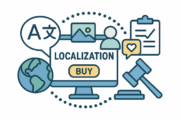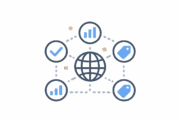

Building Affiliate Communities: How to Nurture Partners as a Tribe, Not Just Contractors

Content:
- Establish a Strong Shared Identity
- Build Trust Through Transparency
- Create Two-Way Communication Channels
- Offer Ongoing Education & Skill Development
- Celebrate Success and Recognize Loyalty
- Empower Affiliates With Tools & Resources
- Encourage Collaboration Within the Community
- Conclusion
- Frequently Asked Questions (FAQ)
The modern affiliate ecosystem is shifting from transactional interactions toward long-term relationship models. Programs built solely on payouts and isolated communication rarely achieve sustainable growth. In contrast, communities built around shared values and transparent collaboration demonstrate higher engagement, stable promotion cycles, and predictable revenue contributions. Treating partners as cohesive community members rather than independent contractors creates an environment where loyalty increases naturally.
A well-structured affiliate community strengthens your brand’s partner ecosystem, supports faster onboarding, and encourages consistent knowledge exchange. When affiliates feel connected to a mission, they behave as ambassadors who generate higher-quality leads and reinforce brand authority. This approach transforms standard affiliation into a network
where people choose to stay because they benefit from access, recognition, mentorship, and trust.
Establish a Strong Shared Identity
A unified identity gives affiliates a reason to align with your brand beyond compensation. Creating a clear mission allows partners to understand what the program stands for and why their participation matters. This identity should be expressed through values, messaging consistency, and an authentic story that resonates with the audience. Affiliates who connect with this mission naturally become advocates who promote with confidence and accuracy.
To strengthen this identity, provide partners with structured branding guidelines and communication toolkits. Shared assets support unified representation across channels and help maintain a coherent voice. The clearer the brand position, the easier it becomes for affiliates to articulate value to their own audiences.
Key identity components include:
- Mission and value statements
- Brand voice documentation
- Messaging frameworks
- Storytelling assets
Identity checklist for affiliates:
- Understand the program’s purpose.
- Follow the approved messaging structure.
- Use branded assets consistently.
Represent the product’s value proposition accurately.
Build Trust Through Transparency
Trust is the foundation of every successful affiliate relationship. Transparent communication regarding performance metrics, payout policies, and promotional guidelines helps affiliates plan long-term strategies and maintain predictable workflows. Data accuracy is equally important: when partners see reliable reporting, they develop confidence in program integrity.
Transparency should also extend to internal processes. Provide early notifications of upcoming changes to commission structures, launch plans, or compliance requirements. When partners are informed in advance, they can adjust campaigns without losing momentum or revenue. This proactive approach reinforces program credibility and reduces friction.
Elements of transparency:
- Clear reporting dashboards
- Real-time commission tracking
- Detailed payout schedules
- Policy documentation
Benefits for the ecosystem:
- Lower churn rate among affiliates
- Increased program trustworthiness
Higher scaling capacity
Create Two-Way Communication Channels
A true affiliate community relies on dialogue, not one-directional announcements. Two-way communication enables partners to raise questions, propose ideas, and highlight challenges that may otherwise go unnoticed. Establishing dedicated channels ensures every participant has equal access to conversations and program updates.
Interactive communication platforms also improve operational efficiency. Tools like Slack, Discord, private forums, and structured Q&A live sessions reduce support load and encourage peer-to-peer assistance. These environments create feedback loops where insights from affiliates lead directly to program improvements.
Recommended communication channels:
- Slack or Discord workspaces
- Private Facebook or LinkedIn groups
- Monthly office-hour webinars
- Ticket-based support systems
Best practices for two-way communication:
- Respond quickly to partner inquiries.
- Publish weekly update threads.
- Encourage affiliates to share campaign results.
Host open feedback discussions.
Offer Ongoing Education & Skill Development
Professional development is a core driver of affiliate motivation. Programs that offer continuous education produce higher-performing partners who understand the product, the audience, and current marketing trends. A structured learning system supports every level of experience and increases scalability.
Training materials can include step-by-step playbooks, conversion–optimized funnel templates, case studies, and analytics tutorials. Advanced affiliates may benefit from deep-dive masterclasses on paid traffic, content strategy, automation, or segmentation. Education closes knowledge gaps and empowers partners to act with confidence.
Example Training Structure (Table)
| Level | Training Focus | Provided Resources |
| Beginner | Product fundamentals, onboarding workflows | Starter guide, video tutorials |
| Intermediate | Campaign optimization, audience positioning | Custom funnels, copy templates |
| Advanced | Scaling strategies, analytics mastery | Masterclasses, exclusive sessions |
Skill-building resources may include:
- Webinars and live workshops
- Step-by-step checklists
- Case studies with campaign breakdowns
Expert-led mentorship calls
Celebrate Success and Recognize Loyalty
Recognition reinforces community cohesion and increases partner retention. Affiliates who feel valued for their contribution are more likely to maintain promotion frequency and share program updates within their networks. Public acknowledgment also motivates others in the community to elevate their performance.
Celebration can take many forms. Leaderboards, spotlight interviews, and annual awards help surface outstanding results. Personalized feedback and private thank-you messages also play an important role in strengthening long-term engagement. Loyalty recognition should be consistent and data-driven to ensure fairness and transparency.
Recognition strategies:
- Monthly achievement highlights
- Loyalty badges or tier upgrades
- Spotlights in community channels
- Annual partner awards ceremony
Outcomes of structured recognition:
- Stronger brand advocacy
- Higher retention rates
Increased motivation for new affiliates
Empower Affiliates With Tools & Resources
Providing high-performance resources enables affiliates to act efficiently and generate consistent results. Partners should not spend excessive time creating assets, troubleshooting technical issues, or building campaigns from scratch. Robust resource libraries eliminate unnecessary work and support rapid scaling.
Effective toolkits include landing pages, promotional creatives, email sequences, product samples, and access to pre-built automations. This infrastructure allows affiliates to launch campaigns quickly and adapt tactics based on market feedback. The more friction you remove from their workflows, the faster your affiliate program grows.
Essential affiliate resources:
- Pre-approved marketing creatives
- Conversion-optimized landing pages
- Product demo videos
- Keyword and audience research data
Advanced tools for scaling:
- API integrations
- AI-assisted campaign builders
- Multi-variant testing templates
Encourage Collaboration Within the Community
Collaboration transforms individual promoters into a cooperative ecosystem. When affiliates share insights, test results, and new tactics, everyone benefits from collective intelligence. This model increases program resilience and helps partners navigate market changes more effectively.
Create shared spaces where affiliates can collaborate on campaigns, exchange resources, or form peer coaching groups. Mastermind sessions, group challenges, and co-promotion initiatives stimulate creativity and give individuals the opportunity to learn from top performers. A collaborative environment minimizes competition and enhances community morale.
Collaboration mechanisms:
- Mastermind circles
- Partner-pair accountability groups
- Shared case-study archives
- Joint promotional events
Benefits for the community:
- Higher innovation rate
- Faster problem-solving
Stronger interpersonal connections
Conclusion
Building an affiliate community requires more than offering commissions. It involves developing a structured environment where partners feel connected, informed, supported, and valued. By cultivating a strong identity, establishing transparent systems, and enabling ongoing communication, you create a thriving ecosystem built on trust.
Supportive education, recognition mechanisms, and consistent access to resources reinforce long-term engagement. When affiliates operate as members of a shared mission rather than isolated contractors, program performance improves naturally. The shift from transactional management to community-driven leadership is the most effective way to build a sustainable partner network.
FAQ
- How do affiliate communities increase revenue?
A well-organized affiliate community increases revenue through improved retention, higher promotional frequency, and shared optimization insights. Affiliates produce stronger results when supported by structured resources and transparent communication. - What platforms are best for community building?
Slack, Discord, and private Facebook groups are effective platforms for managing communication, distributing materials, and hosting discussions among partners. - How often should program managers communicate with affiliates?
Weekly updates and monthly webinars maintain clarity, provide ongoing support, and ensure all partners remain informed about new campaigns and product changes. - What motivates affiliates beyond commissions?
Skill development, recognition, access to exclusive insights, and participation in a high-value community are major motivators in addition to financial incentives. - How do I keep affiliates engaged long-term?
Continual education, transparent leadership, consistent recognition, and accessible resources help maintain long-term engagement and reduce partner churn.

Gamification of Affiliate Programs: How to Motivate Affiliates with Game-Mechanics
Gamification has become one of the most effective ways to strengthen affiliate engagement and improve the overall performance of partner networks. By introducing structured game mechanics into traditional affiliate workflows, brands create measurable incentives that encourage consistent participation and higher productivity.

Localization Strategies for Global Affiliate Programs: Language, Culture & Compliance
Global affiliate programs operate in highly competitive markets where user expectations differ across regions. Brands that scale internationally must account for linguistic diversity, cultural norms, and jurisdiction-specific rules that influence how audiences interpret marketing content.




